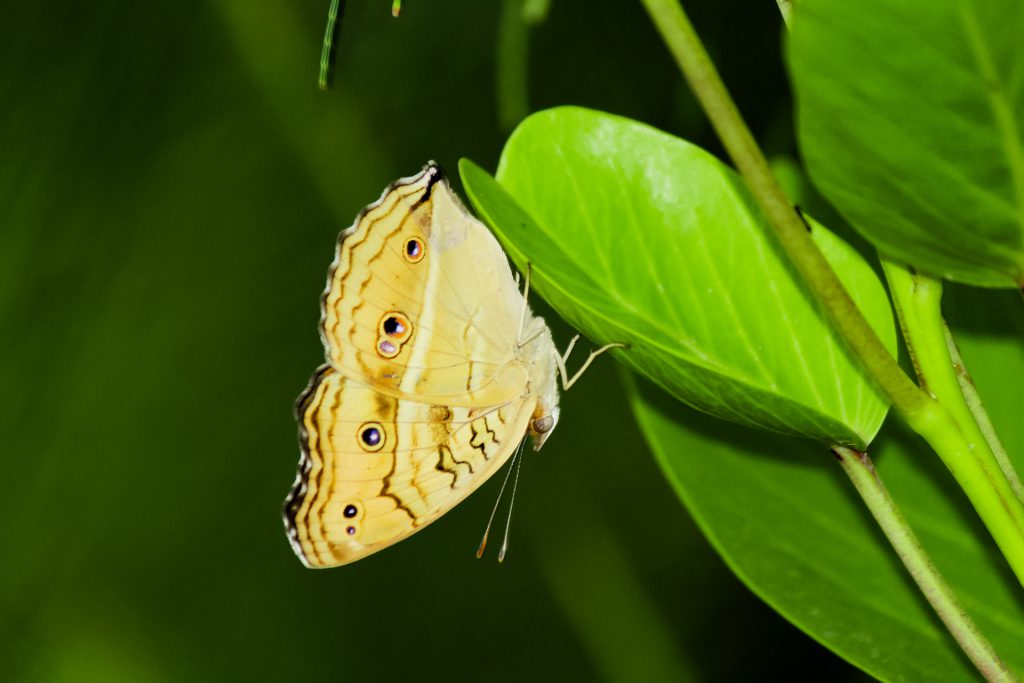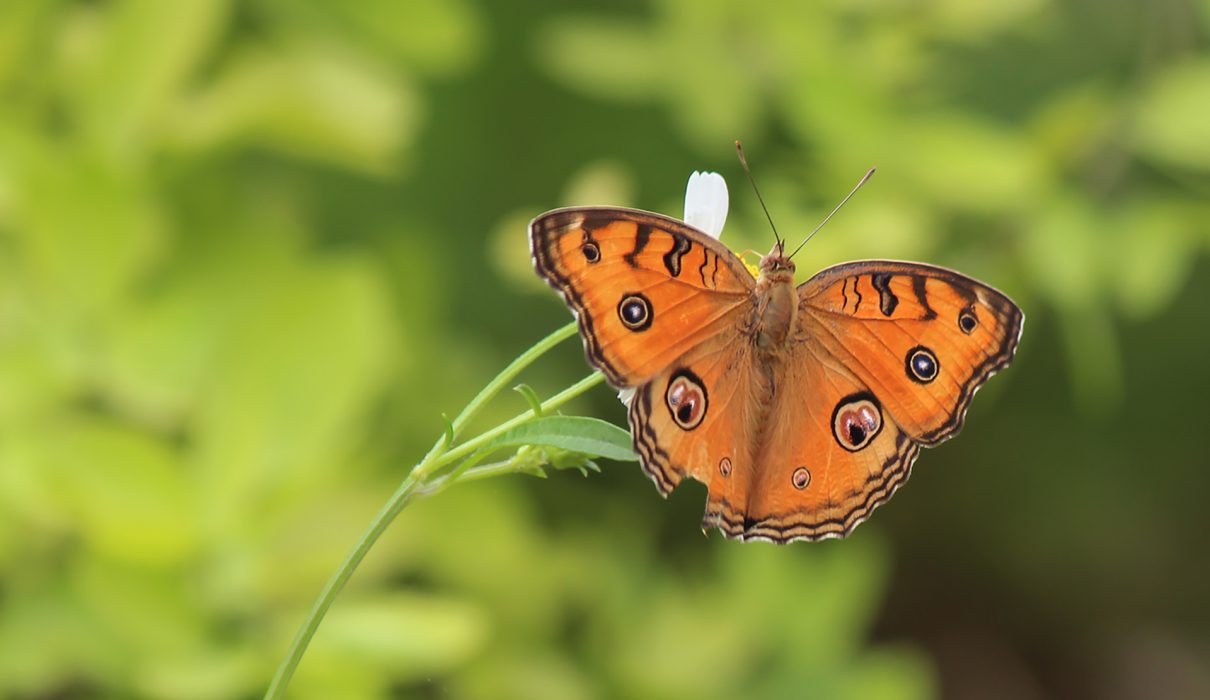The Peacock Pansy butterfly, with its striking yellow hues and intricate patterns, graces the diverse landscapes of the Maldives. First documented in 2014, this captivating species has since become a cherished sight across various regions of the Maldives archipelago.

Physical Description: The Peacock Pansy boasts rich yellowish-brown wings adorned with darker edges and distinctive eye-spots. Its forewings feature four distinct costal bars, while each hindwing showcases a larger eye-spot near the apex. Underneath, the wings exhibit a subdued coloration, with smaller ocelli and prominent dark stripes.
General Information:
- Family: Nymphalidae
- Subfamily: Nymphalinae
- Estimated Lifespan: 36 Days
- Habitat: Found in low-lying areas, gardens, open countryside, rice fields, and roadsides
Life History: Males of the Peacock Pansy are believed to be territorial, while females lay eggs on host plants, such as Alternanthera philoxeroides and Mimosa pudica. Upon hatching, the caterpillars feed on the host plant until forming their chrysalis.
Flights: Adult Peacock Pansies are observed throughout the year, with peak populations occurring from April to October, coinciding with the monsoon season.
Fun Facts:
- Exhibits seasonal variation, leading to initial confusion as separate species
- Displays distinct dry-season and wet-season forms with varying wing patterns
Etymology Of Name: The origin of Junonia, the genus name, remains unknown. Similarly, the species name, almana, awaits clarification.
Host Plants: The larvae feed on Alternanthera philoxeroides and Mimosa pudica, also known as the Sensitive Plant.
Food Source: Adult Peacock Pansies nectar from various flowers, particularly favoring Lantana.
Scientific Classification:
- Domain: Eukaryota
- Kingdom: Animalia
- Phylum: Arthropoda
- Class: Insecta
- Order: Lepidoptera
- Family: Nymphalidae
- Genus: Junonia
- Species: J. almana
Conclusion: The Peacock Pansy butterfly not only adds to the vibrant tapestry of Maldivian biodiversity but also serves as a symbol of nature’s resilience and beauty. With its enchanting presence and seasonal variations, this species continues to captivate nature enthusiasts and researchers alike, underscoring the importance of conserving the rich ecological heritage of the Maldives.
References:
- Wikipedia: Junonia almana
- ButterflyCircle Blogspot: Life History of Peacock Pansy (https://butterflycircle.blogspot.com/2011/05/life-history-of-peacock-pansy.html)


